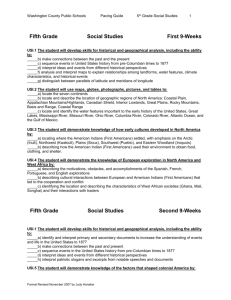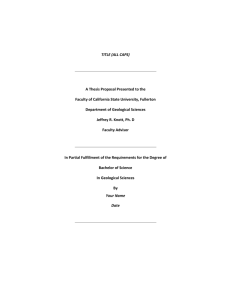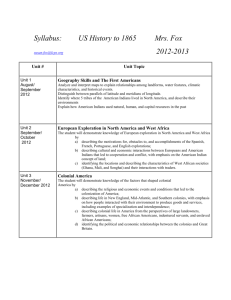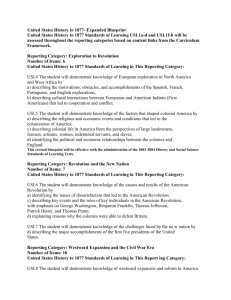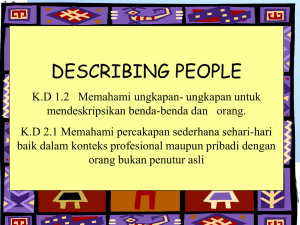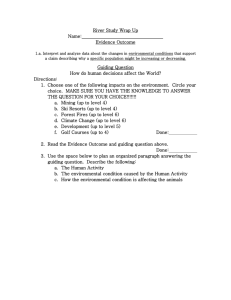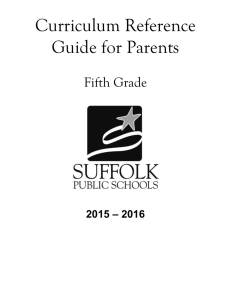GRADE 6 SOL Checklist US History to 1865 Student: School Year
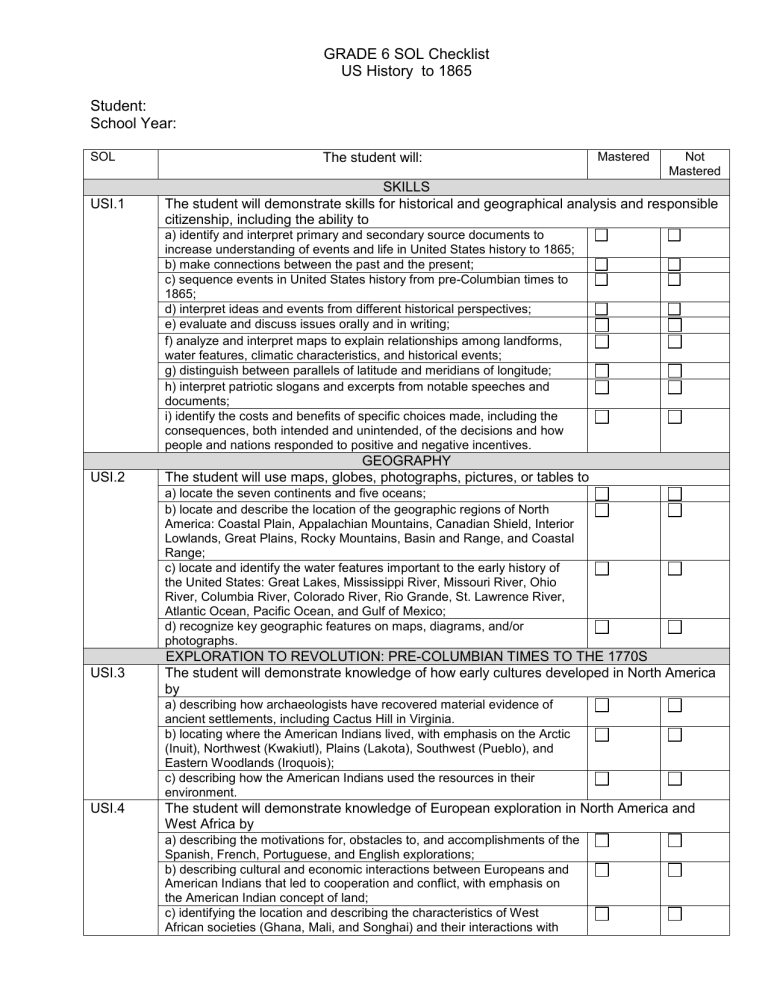
GRADE 6 SOL Checklist
US History to 1865
Student:
School Year:
SOL
USI.1
The student will: a) identify and interpret primary and secondary source documents to increase understanding of events and life in United States history to 1865; b) make connections between the past and the present; c) sequence events in United States history from pre-Columbian times to
1865; d) interpret ideas and events from different historical perspectives; e) evaluate and discuss issues orally and in writing;
Mastered Not
Mastered
SKILLS
The student will demonstrate skills for historical and geographical analysis and responsible citizenship, including the ability to
USI.2
USI.3
USI.4 f) analyze and interpret maps to explain relationships among landforms, water features, climatic characteristics, and historical events; g) distinguish between parallels of latitude and meridians of longitude; h) interpret patriotic slogans and excerpts from notable speeches and documents; i) identify the costs and benefits of specific choices made, including the consequences, both intended and unintended, of the decisions and how people and nations responded to positive and negative incentives.
GEOGRAPHY
The student will use maps, globes, photographs, pictures, or tables to a) locate the seven continents and five oceans; b) locate and describe the location of the geographic regions of North
America: Coastal Plain, Appalachian Mountains, Canadian Shield, Interior
Lowlands, Great Plains, Rocky Mountains, Basin and Range, and Coastal
Range; c) locate and identify the water features important to the early history of the United States: Great Lakes, Mississippi River, Missouri River, Ohio
River, Columbia River, Colorado River, Rio Grande, St. Lawrence River,
Atlantic Ocean, Pacific Ocean, and Gulf of Mexico; d) recognize key geographic features on maps, diagrams, and/or photographs.
EXPLORATION TO REVOLUTION: PRE-COLUMBIAN TIMES TO THE 1770S
The student will demonstrate knowledge of how early cultures developed in North America by a) describing how archaeologists have recovered material evidence of ancient settlements, including Cactus Hill in Virginia. b) locating where the American Indians lived, with emphasis on the Arctic
(Inuit), Northwest (Kwakiutl), Plains (Lakota), Southwest (Pueblo), and
Eastern Woodlands (Iroquois); c) describing how the American Indians used the resources in their environment.
The student will demonstrate knowledge of European exploration in North America and
West Africa by a) describing the motivations for, obstacles to, and accomplishments of the
Spanish, French, Portuguese, and English explorations; b) describing cultural and economic interactions between Europeans and
American Indians that led to cooperation and conflict, with emphasis on the American Indian concept of land; c) identifying the location and describing the characteristics of West
African societies (Ghana, Mali, and Songhai) and their interactions with
USI.5
USI.6
USI.7
USI.8
USI.9 traders.
TURMOIL AND CHANGE: 1890S TO 1945
The student will demonstrate knowledge of the factors that shaped colonial America by a) describing the religious and economic events and conditions that led to the colonization of America; b) describing life in the New England, Mid-Atlantic, and Southern colonies, with emphasis on how people interacted with their environment to produce goods and services, including examples of specialization and interdependence; c) describing colonial life in America from the perspectives of large landowners, farmers, artisans, women, free African Americans, indentured servants, and enslaved African Americans; d) identifying the political and economic relationships between the colonies and Great Britain.
REVOLUTION AND THE NEW NATION: 1770S TO THE EARLY 1800S
The student will demonstrate knowledge of the causes and results of the American
Revolution by a) identifying the issues of dissatisfaction that led to the American
Revolution; b) identifying how political ideas shaped the revolutionary movement in
America and led to the Declaration of Independence; c) describing key events and the roles of key individuals in the American
Revolution, with emphasis on George Washington, Benjamin Franklin,
Thomas Jefferson, and Patrick Henry; d) explaining reasons why the colonies were able to defeat Great Britain.
The student will demonstrate knowledge of the challenges faced by the new nation by a) identifying the weaknesses of the government established by the
Articles of Confederation; b) describing the historical development of the Constitution of the United
States; c) describing the major accomplishments of the first five presidents of the
United States.
EXPANSION AND REFORM: 1801 TO 1861
The student will demonstrate knowledge of westward expansion and reform in America from 1801 to 1861 by a) describing territorial expansion and how it affected the political map of the United States, with emphasis on the Louisiana Purchase, the Lewis and Clark expedition, and the acquisitions of Florida, Texas, Oregon, and
California; b) identifying the geographic and economic factors that influenced the westward movement of settlers; c) describing the impact of inventions, including the cotton gin, the reaper, the steamboat, and the steam locomotive, on life in America; d) identifying the main ideas of the abolitio nist and women’s suffrage movements.
CIVIL WAR: 1861 TO 1865
The student will demonstrate knowledge of the causes, major events, and effects of the
Civil War by a) describing the cultural, economic, and constitutional issues that divided the nation; b) explaining how the issues of states’ rights and slavery increased sectional tensions; c) identifying on a map the states that seceded from the Union and those that remained in the Union; d) describing the roles of Abraham Lincoln, Jefferson Davis, Ulysses S.
Grant, Robert E. Lee, Thomas “Stonewall” Jackson, and Frederick
Douglass in events leading to and during the war; e) using maps to explain critical developments in the war, including major battles;
f) describing the effects of war from the perspectives of Union and
Confederate soldiers (including African American soldiers), women, and enslaved African Americans.
